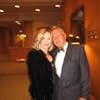To answer questions about
My Name Is Lucy Barton,
please sign up.
Savannah
Is there a book that *cannot* be discussed?
Sara
Here's some discussion questions that can be asked.
What is the symbolism of the Chrysler building as a backdrop? Does anyone else wonder about the building having such a prominent place -- almost another character standing watch during her many weeks in the hospital?
What is your interpretation as to why Lucy's mother asked her to leave when Lucy visited her at her deathbed in Chicago hospital? Why wouldn't she let he stay with her until the end? Is it because of the father who was also at the hospital - was she protecting her in a way? Was she coming to terms with what type of mother she was and Lucy was a reminder of that?
Who is her friend Jeremy and how did he influence her?
Did anyone keep reading to see if something exciting was going to happen?
Would you recommend this book?
The most troubling scene was when the father forces his son to parade in town dressed in women's clothes. Did anyone else find that a disturbing scene?
What is "the book with Tilly in it" Lucy mentions in passing?
What was her problem - her parents, poverty, alienation from community?
Is the reason that Lucy was disconnected from her family was because the man she married brought up bad memories from her father?
What is the significance of the gift of cheese given to Lucy's room mate by her mother who had not been good to her?
Did anyone understand what Lucy's problem was with her first husband?
Is the "long, brown snake" that she refers to seeing while locked in the truck an ACTUAL snake or is it a sexual reference?
What was the "thing" that happened to Lucy in her childhood she never tells?
How may Lucy Barton books are there?
How could anyone like this book?
Did Jeremy die or not?
Was it mentioned how Lucy and William met and got together?
Did anyone else have the feeling that Lucy’s mother was not actually at the hospital?
What is the symbolism of the Chrysler building as a backdrop? Does anyone else wonder about the building having such a prominent place -- almost another character standing watch during her many weeks in the hospital?
What is your interpretation as to why Lucy's mother asked her to leave when Lucy visited her at her deathbed in Chicago hospital? Why wouldn't she let he stay with her until the end? Is it because of the father who was also at the hospital - was she protecting her in a way? Was she coming to terms with what type of mother she was and Lucy was a reminder of that?
Who is her friend Jeremy and how did he influence her?
Did anyone keep reading to see if something exciting was going to happen?
Would you recommend this book?
The most troubling scene was when the father forces his son to parade in town dressed in women's clothes. Did anyone else find that a disturbing scene?
What is "the book with Tilly in it" Lucy mentions in passing?
What was her problem - her parents, poverty, alienation from community?
Is the reason that Lucy was disconnected from her family was because the man she married brought up bad memories from her father?
What is the significance of the gift of cheese given to Lucy's room mate by her mother who had not been good to her?
Did anyone understand what Lucy's problem was with her first husband?
Is the "long, brown snake" that she refers to seeing while locked in the truck an ACTUAL snake or is it a sexual reference?
What was the "thing" that happened to Lucy in her childhood she never tells?
How may Lucy Barton books are there?
How could anyone like this book?
Did Jeremy die or not?
Was it mentioned how Lucy and William met and got together?
Did anyone else have the feeling that Lucy’s mother was not actually at the hospital?
Debbie
Definitely good for discussion but because of the brevity of the book the discussion may not last as long as you hope.
About Goodreads Q&A
Ask and answer questions about books!
You can pose questions to the Goodreads community with Reader Q&A, or ask your favorite author a question with Ask the Author.
See Featured Authors Answering Questions
Learn more





